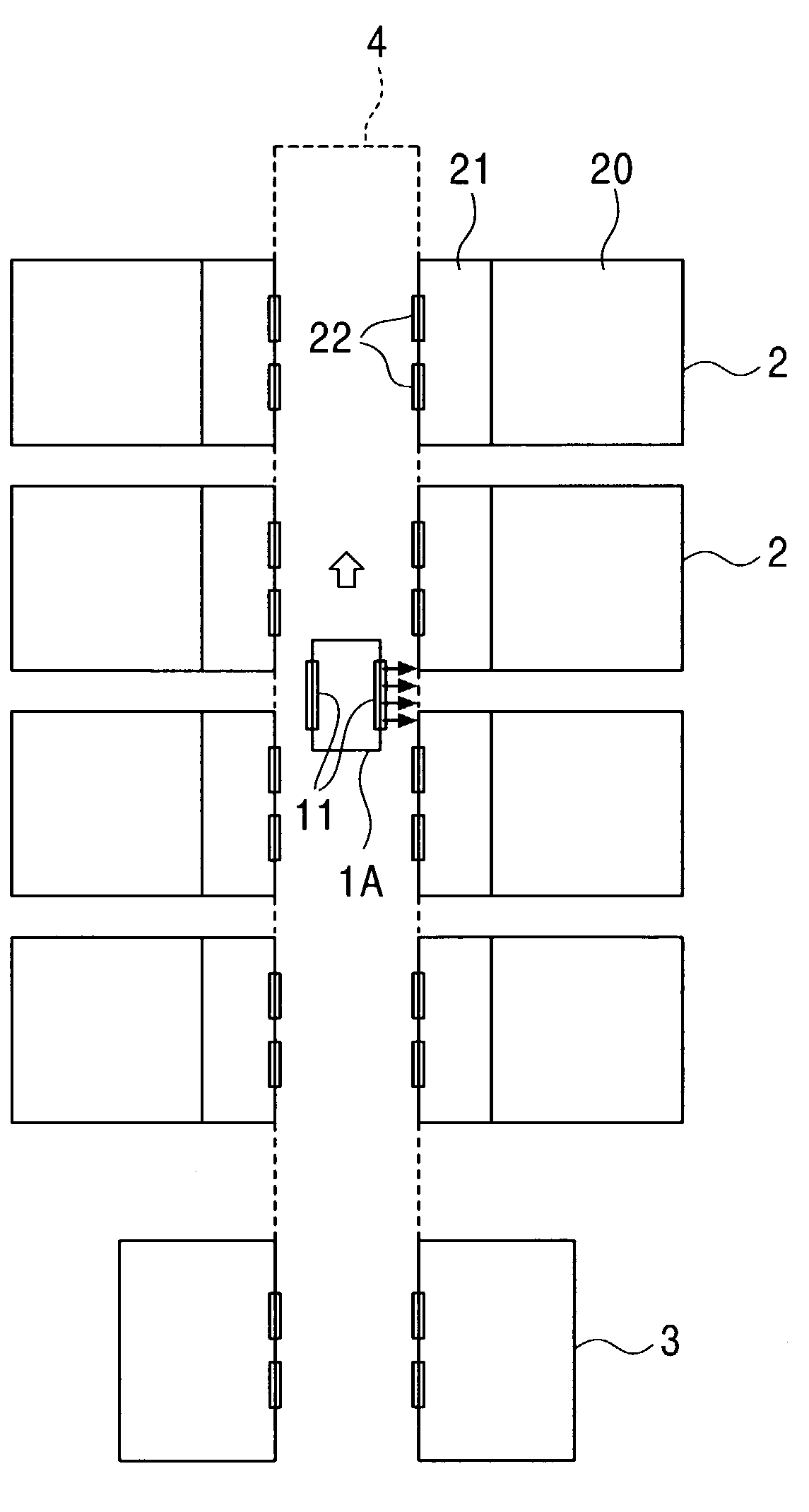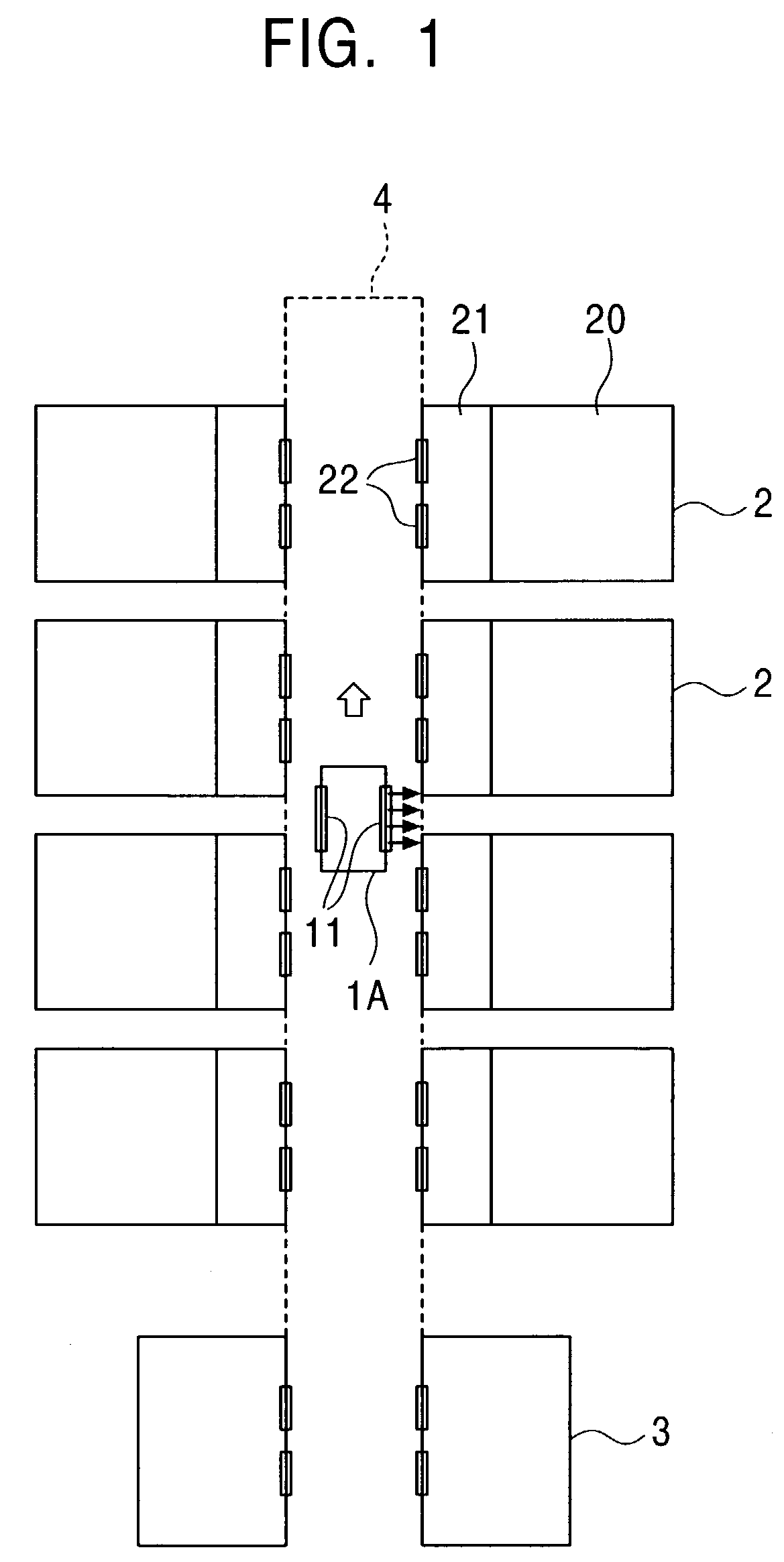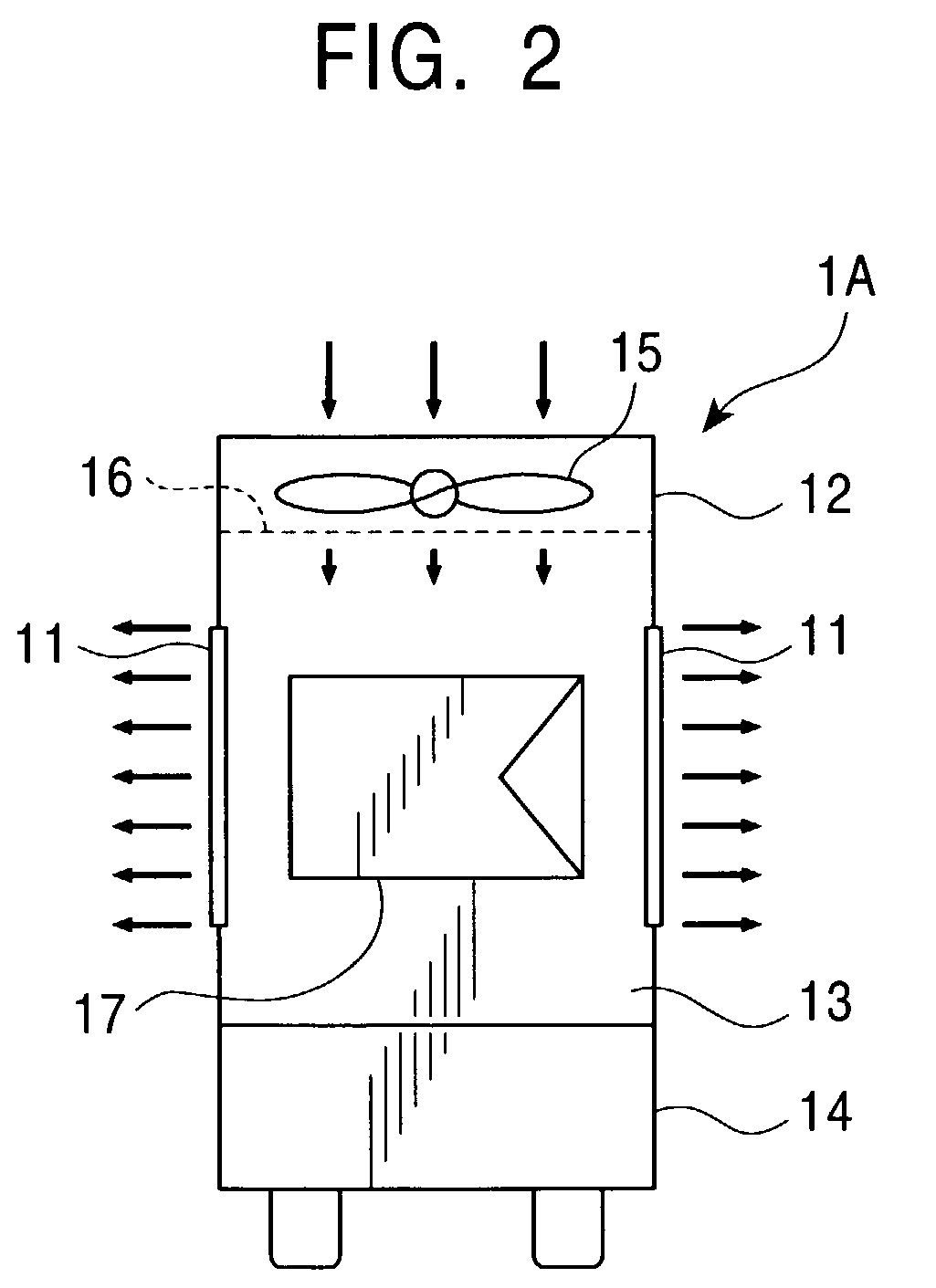Carrying vehicle, manufacturing apparatus, and carrying system
a manufacturing apparatus and carrying system technology, applied in the direction of filter regeneration, dispersed particle filtration, combinatorial devices, etc., can solve the problems of large-capacity clean room, high cost, and immediate decrease in yield, so as to prevent dust from entering the article storage, improve the carrying efficiency, and prevent the effect of dus
- Summary
- Abstract
- Description
- Claims
- Application Information
AI Technical Summary
Benefits of technology
Problems solved by technology
Method used
Image
Examples
embodiment 2
[0122]In Embodiment 1, description has been given of the example in which the air injecting section is provided on the entire surface of the transfer port of the automated carrying vehicle. However, in the present embodiment, a description will be given of a case in which the air injecting section is formed closer to the advancing direction than to the transfer port. Further, a description will be given of a case in which the air injecting section forms an air curtain spreading in a vertical direction.
[0123]FIG. 7 is a schematic view showing an example of a configuration of an automated carrying system according to Embodiment 2 of the present invention. In the figure, 1B is the automated carrying vehicle, 2 is the semiconductor manufacturing apparatus, 3 is the stocker, and 4 is the carrying path. Further, 18B is the air nozzle, 19B is the air injecting section, 20 is the processing section, 21 is the loader / unloader, and 11 and 22 are the transfer ports.
[0124]The air injecting sect...
embodiment 3
[0132]In Embodiments 1 and 2, a description has been given of the example in which the air injecting section is provided on the side of the automated carrying vehicle. However, in the present embodiment, a description will be given of a case in which the air injecting section is provided in a corner of the automated carrying vehicle. Further, a description will be given of a case in which the air injecting section blows out air from the side of the automated carrying vehicle 1A in a direction closer to the advancing direction than to the direction normal to this side.
[0133]FIG. 9 is a schematic view showing an example of a configuration of an automated carrying system according to Embodiment 3 of the present invention. In the figure, 1C is the automated carrying vehicle, 2 is the semiconductor manufacturing apparatus, 3 is the stocker, 4 is the carrying path, and 18C is the air nozzle. Further, 19C is the air injecting section, 20 is the processing section, 21 is the loader / unloader...
embodiment 4
[0140]In the above embodiments, a description has been given of the example in which the automated carrying vehicle is provided with the air injecting section to remove foreign matter or the like attached to the transfer port of the semiconductor manufacturing apparatus. However, in the present embodiment, a description will be given of a case in which the air injecting section is provided on the semiconductor manufacturing apparatus 2 to remove foreign matter or the like attached to the transfer port 22 of the semiconductor manufacturing apparatus 2.
[0141]FIG. 11 is a sectional view schematically showing the structure of a semiconductor manufacturing apparatus 2A according to Embodiment 4 of the present invention. In this figure, the semiconductor manufacturing apparatus 2A, applied to an automated carrying system similar to that in FIG. 1, is viewed from its side. In the figure, 17 is the cassette, 20 is the processing section, 21 is the loader / unloader, the 22 is the transfer por...
PUM
| Property | Measurement | Unit |
|---|---|---|
| heights | aaaaa | aaaaa |
| pressure | aaaaa | aaaaa |
| height | aaaaa | aaaaa |
Abstract
Description
Claims
Application Information
 Login to View More
Login to View More - R&D
- Intellectual Property
- Life Sciences
- Materials
- Tech Scout
- Unparalleled Data Quality
- Higher Quality Content
- 60% Fewer Hallucinations
Browse by: Latest US Patents, China's latest patents, Technical Efficacy Thesaurus, Application Domain, Technology Topic, Popular Technical Reports.
© 2025 PatSnap. All rights reserved.Legal|Privacy policy|Modern Slavery Act Transparency Statement|Sitemap|About US| Contact US: help@patsnap.com



